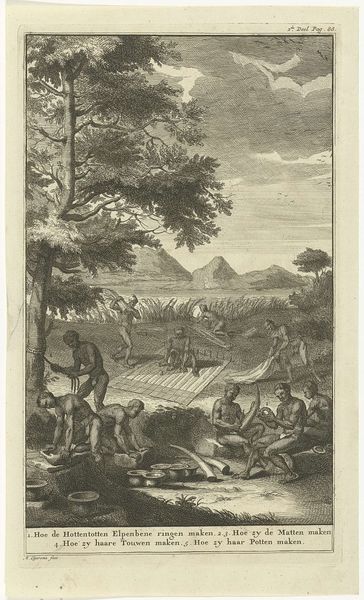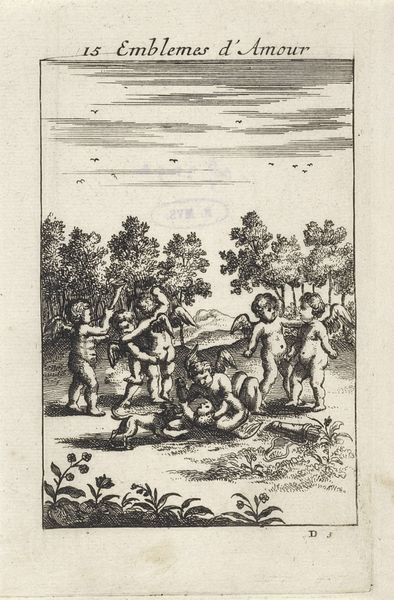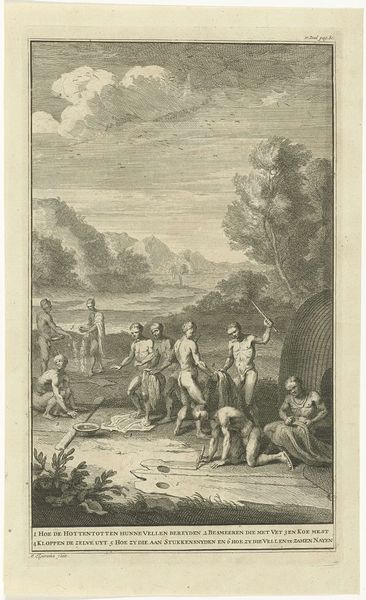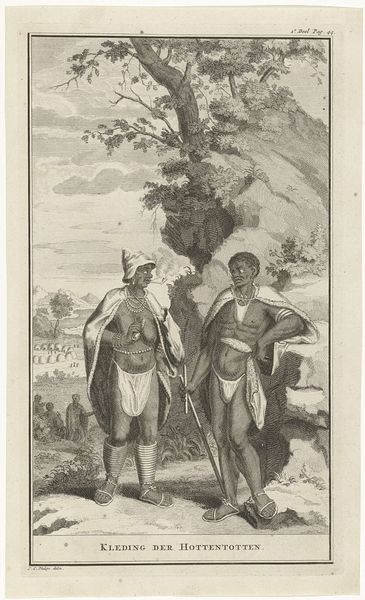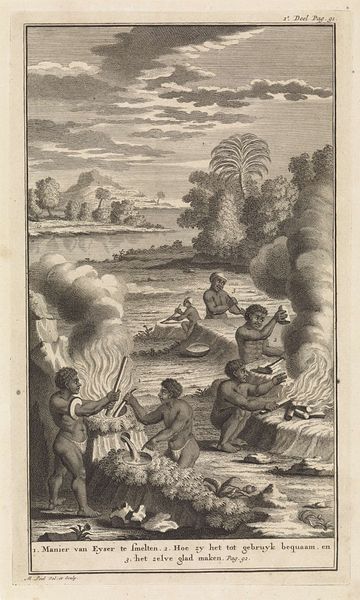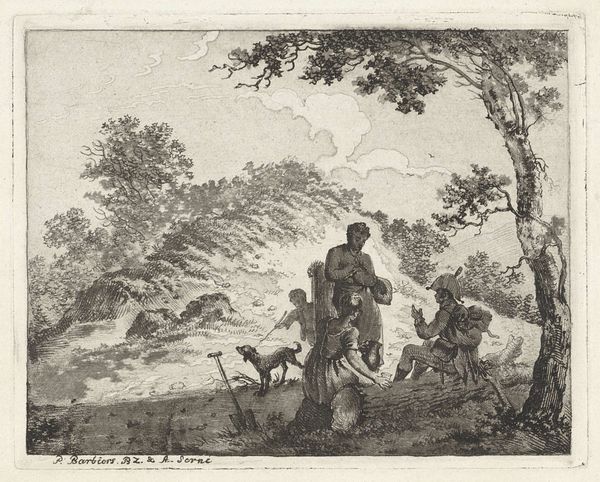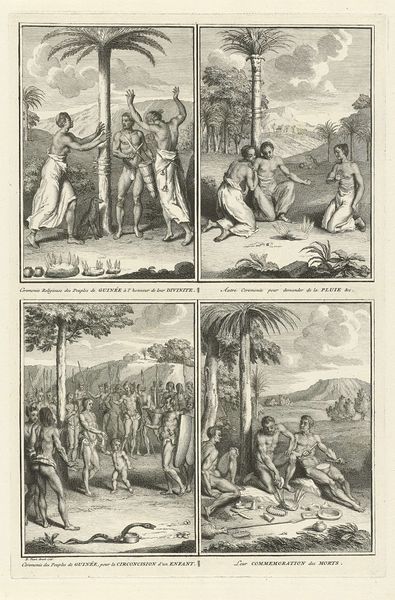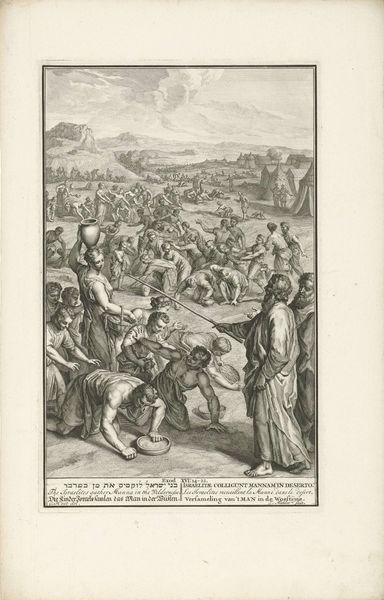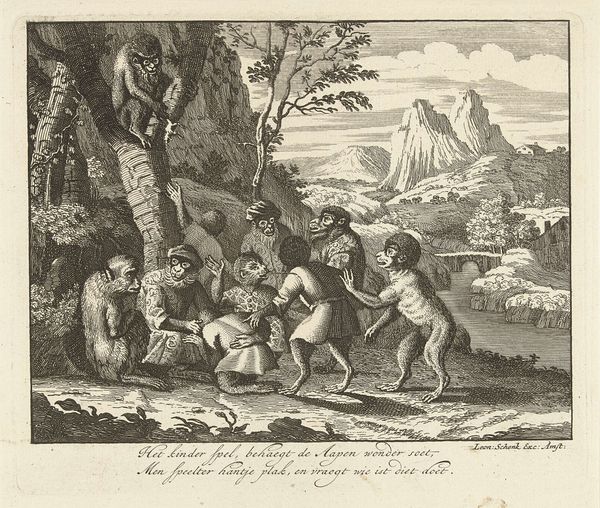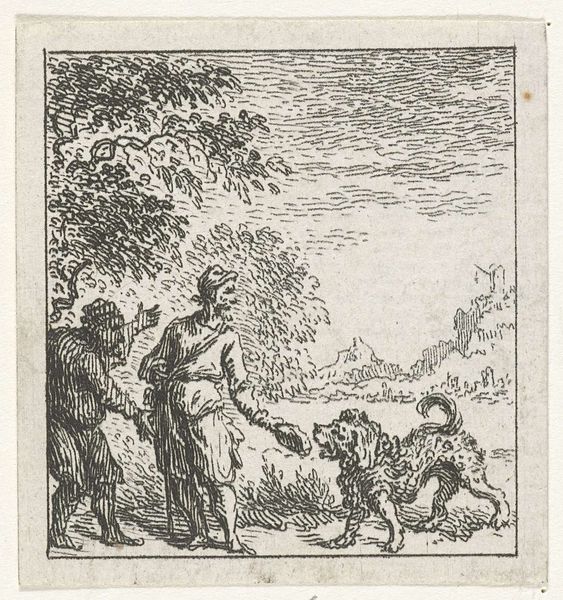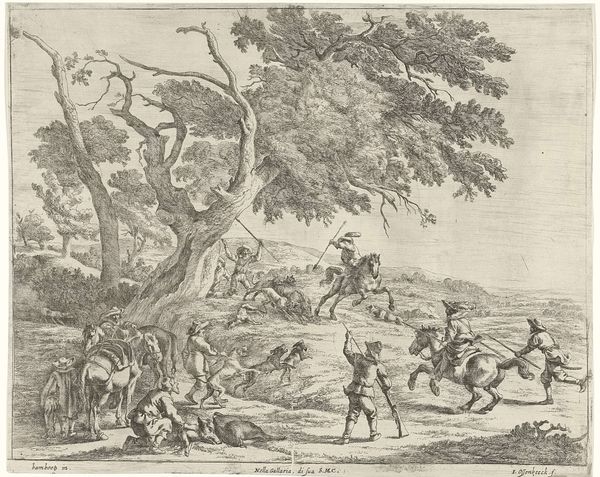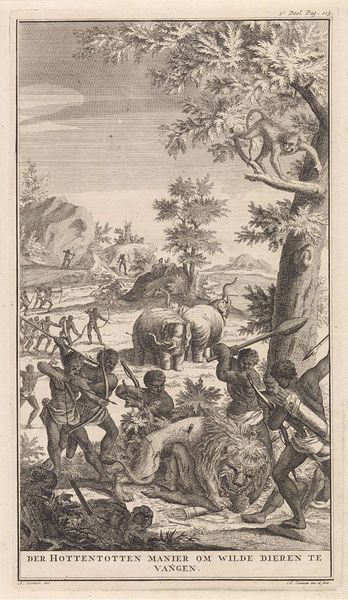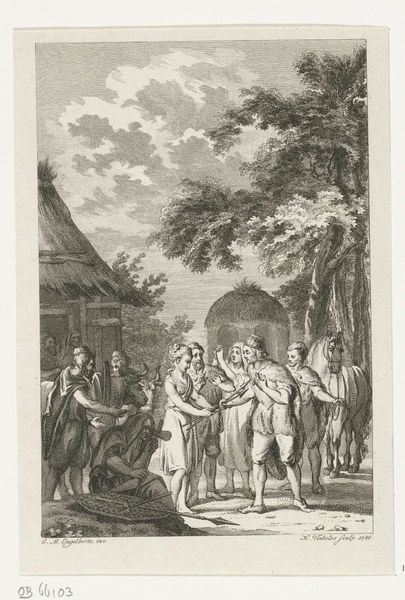
print, engraving
#
baroque
# print
#
old engraving style
#
landscape
#
figuration
#
pencil drawing
#
line
#
genre-painting
#
engraving
Dimensions: height 295 mm, width 170 mm
Copyright: Rijks Museum: Open Domain
Curator: Let's delve into this engraving titled "Muziekinstrumenten in gebruik bij de Khoikhoi" by Abraham Zeeman, created in 1727. The scene depicts what appears to be Khoikhoi people with their musical instruments in a landscape. What strikes you first? Editor: Well, I'm drawn to the detail, considering it's an engraving. It feels like a captured moment of everyday life, but it is an outsider’s depiction. How do you interpret the way materials shape our understanding of this work? Curator: It is an outside observation mediated through the lens of 18th century Dutch production practices. Look closely at the means of production, particularly the printing press and engraving. These were not neutral technologies, but tools of colonialism, shaping how Europeans perceived and disseminated information about other cultures. Editor: So, the printmaking process itself played a role in constructing a certain narrative about the Khoikhoi people. Can you expand? Curator: Absolutely. The act of translating this cultural moment into a readily reproducible image changed its character, transforming something immediate and material into a commodity. The raw materials needed for printmaking: the metal, the paper, the ink; all tied to global trade networks that directly and indirectly supported colonial activities. The market for such prints encouraged particular perspectives and perpetuated stereotypes. How does understanding the materials and modes of making this print affect our understanding of the depicted culture? Editor: It complicates it significantly. Recognizing the print as a manufactured object, shaped by economic and social forces of its time, reveals how presumptions shaped the artist's rendition and, consequently, our understanding. This lens offers critical perspective, moving us past a naive engagement with the imagery. Curator: Exactly. Instead of a transparent window into the past, we understand the engraving as an artifact deeply embedded in a complex web of power dynamics, production processes, and cultural consumption. Editor: That's an eye-opening way to contextualize this print. Thanks, this materially grounded examination of the piece completely reframed my appreciation of it.
Comments
No comments
Be the first to comment and join the conversation on the ultimate creative platform.
